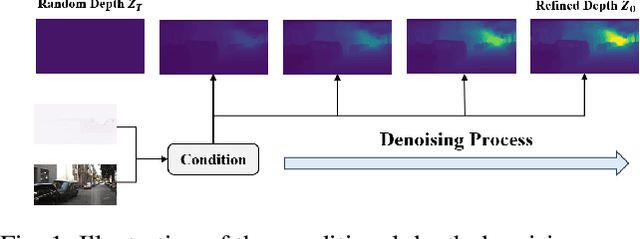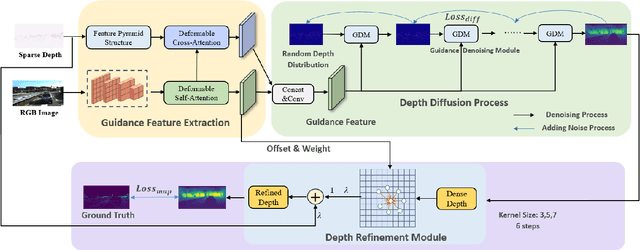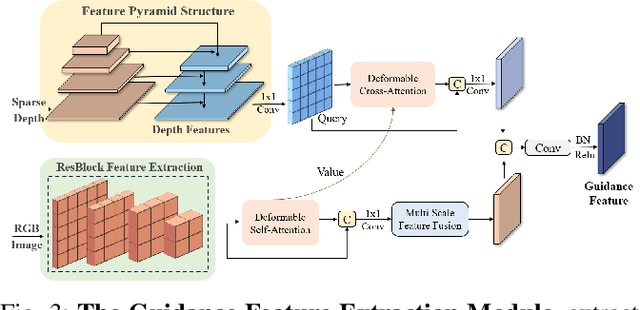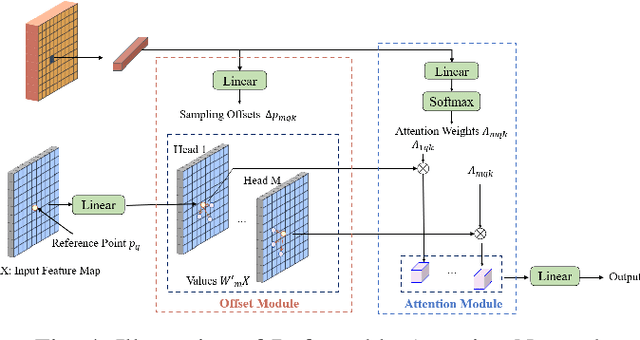Chuang Zhang
Energy Efficient Trajectory Control and Resource Allocation in Multi-UAV-assisted MEC via Deep Reinforcement Learning
Aug 01, 2025Abstract:Mobile edge computing (MEC) is a promising technique to improve the computational capacity of smart devices (SDs) in Internet of Things (IoT). However, the performance of MEC is restricted due to its fixed location and limited service scope. Hence, we investigate an unmanned aerial vehicle (UAV)-assisted MEC system, where multiple UAVs are dispatched and each UAV can simultaneously provide computing service for multiple SDs. To improve the performance of system, we formulated a UAV-based trajectory control and resource allocation multi-objective optimization problem (TCRAMOP) to simultaneously maximize the offloading number of UAVs and minimize total offloading delay and total energy consumption of UAVs by optimizing the flight paths of UAVs as well as the computing resource allocated to served SDs. Then, consider that the solution of TCRAMOP requires continuous decision-making and the system is dynamic, we propose an enhanced deep reinforcement learning (DRL) algorithm, namely, distributed proximal policy optimization with imitation learning (DPPOIL). This algorithm incorporates the generative adversarial imitation learning technique to improve the policy performance. Simulation results demonstrate the effectiveness of our proposed DPPOIL and prove that the learned strategy of DPPOIL is better compared with other baseline methods.
Large AI Model-Enabled Secure Communications in Low-Altitude Wireless Networks: Concepts, Perspectives and Case Study
Aug 01, 2025Abstract:Low-altitude wireless networks (LAWNs) have the potential to revolutionize communications by supporting a range of applications, including urban parcel delivery, aerial inspections and air taxis. However, compared with traditional wireless networks, LAWNs face unique security challenges due to low-altitude operations, frequent mobility and reliance on unlicensed spectrum, making it more vulnerable to some malicious attacks. In this paper, we investigate some large artificial intelligence model (LAM)-enabled solutions for secure communications in LAWNs. Specifically, we first explore the amplified security risks and important limitations of traditional AI methods in LAWNs. Then, we introduce the basic concepts of LAMs and delve into the role of LAMs in addressing these challenges. To demonstrate the practical benefits of LAMs for secure communications in LAWNs, we propose a novel LAM-based optimization framework that leverages large language models (LLMs) to generate enhanced state features on top of handcrafted representations, and to design intrinsic rewards accordingly, thereby improving reinforcement learning performance for secure communication tasks. Through a typical case study, simulation results validate the effectiveness of the proposed framework. Finally, we outline future directions for integrating LAMs into secure LAWN applications.
DriveCamSim: Generalizable Camera Simulation via Explicit Camera Modeling for Autonomous Driving
May 26, 2025Abstract:Camera sensor simulation serves as a critical role for autonomous driving (AD), e.g. evaluating vision-based AD algorithms. While existing approaches have leveraged generative models for controllable image/video generation, they remain constrained to generating multi-view video sequences with fixed camera viewpoints and video frequency, significantly limiting their downstream applications. To address this, we present a generalizable camera simulation framework DriveCamSim, whose core innovation lies in the proposed Explicit Camera Modeling (ECM) mechanism. Instead of implicit interaction through vanilla attention, ECM establishes explicit pixel-wise correspondences across multi-view and multi-frame dimensions, decoupling the model from overfitting to the specific camera configurations (intrinsic/extrinsic parameters, number of views) and temporal sampling rates presented in the training data. For controllable generation, we identify the issue of information loss inherent in existing conditional encoding and injection pipelines, proposing an information-preserving control mechanism. This control mechanism not only improves conditional controllability, but also can be extended to be identity-aware to enhance temporal consistency in foreground object rendering. With above designs, our model demonstrates superior performance in both visual quality and controllability, as well as generalization capability across spatial-level (camera parameters variations) and temporal-level (video frame rate variations), enabling flexible user-customizable camera simulation tailored to diverse application scenarios. Code will be avaliable at https://github.com/swc-17/DriveCamSim for facilitating future research.
MFogHub: Bridging Multi-Regional and Multi-Satellite Data for Global Marine Fog Detection and Forecasting
May 15, 2025Abstract:Deep learning approaches for marine fog detection and forecasting have outperformed traditional methods, demonstrating significant scientific and practical importance. However, the limited availability of open-source datasets remains a major challenge. Existing datasets, often focused on a single region or satellite, restrict the ability to evaluate model performance across diverse conditions and hinder the exploration of intrinsic marine fog characteristics. To address these limitations, we introduce \textbf{MFogHub}, the first multi-regional and multi-satellite dataset to integrate annotated marine fog observations from 15 coastal fog-prone regions and six geostationary satellites, comprising over 68,000 high-resolution samples. By encompassing diverse regions and satellite perspectives, MFogHub facilitates rigorous evaluation of both detection and forecasting methods under varying conditions. Extensive experiments with 16 baseline models demonstrate that MFogHub can reveal generalization fluctuations due to regional and satellite discrepancy, while also serving as a valuable resource for the development of targeted and scalable fog prediction techniques. Through MFogHub, we aim to advance both the practical monitoring and scientific understanding of marine fog dynamics on a global scale. The dataset and code are at \href{https://github.com/kaka0910/MFogHub}{https://github.com/kaka0910/MFogHub}.
Aerial Active STAR-RIS-assisted Satellite-Terrestrial Covert Communications
Apr 22, 2025Abstract:An integration of satellites and terrestrial networks is crucial for enhancing performance of next generation communication systems. However, the networks are hindered by the long-distance path loss and security risks in dense urban environments. In this work, we propose a satellite-terrestrial covert communication system assisted by the aerial active simultaneous transmitting and reflecting reconfigurable intelligent surface (AASTAR-RIS) to improve the channel capacity while ensuring the transmission covertness. Specifically, we first derive the minimal detection error probability (DEP) under the worst condition that the Warden has perfect channel state information (CSI). Then, we formulate an AASTAR-RIS-assisted satellite-terrestrial covert communication optimization problem (ASCCOP) to maximize the sum of the fair channel capacity for all ground users while meeting the strict covert constraint, by jointly optimizing the trajectory and active beamforming of the AASTAR-RIS. Due to the challenges posed by the complex and high-dimensional state-action spaces as well as the need for efficient exploration in dynamic environments, we propose a generative deterministic policy gradient (GDPG) algorithm, which is a generative deep reinforcement learning (DRL) method to solve the ASCCOP. Concretely, the generative diffusion model (GDM) is utilized as the policy representation of the algorithm to enhance the exploration process by generating diverse and high-quality samples through a series of denoising steps. Moreover, we incorporate an action gradient mechanism to accomplish the policy improvement of the algorithm, which refines the better state-action pairs through the gradient ascent. Simulation results demonstrate that the proposed approach significantly outperforms important benchmarks.
Enhancing Multi-task Learning Capability of Medical Generalist Foundation Model via Image-centric Multi-annotation Data
Apr 14, 2025Abstract:The emergence of medical generalist foundation models has revolutionized conventional task-specific model development paradigms, aiming to better handle multiple tasks through joint training on large-scale medical datasets. However, recent advances prioritize simple data scaling or architectural component enhancement, while neglecting to re-examine multi-task learning from a data-centric perspective. Critically, simply aggregating existing data resources leads to decentralized image-task alignment, which fails to cultivate comprehensive image understanding or align with clinical needs for multi-dimensional image interpretation. In this paper, we introduce the image-centric multi-annotation X-ray dataset (IMAX), the first attempt to enhance the multi-task learning capabilities of medical multi-modal large language models (MLLMs) from the data construction level. To be specific, IMAX is featured from the following attributes: 1) High-quality data curation. A comprehensive collection of more than 354K entries applicable to seven different medical tasks. 2) Image-centric dense annotation. Each X-ray image is associated with an average of 4.10 tasks and 7.46 training entries, ensuring multi-task representation richness per image. Compared to the general decentralized multi-annotation X-ray dataset (DMAX), IMAX consistently demonstrates significant multi-task average performance gains ranging from 3.20% to 21.05% across seven open-source state-of-the-art medical MLLMs. Moreover, we investigate differences in statistical patterns exhibited by IMAX and DMAX training processes, exploring potential correlations between optimization dynamics and multi-task performance. Finally, leveraging the core concept of IMAX data construction, we propose an optimized DMAX-based training strategy to alleviate the dilemma of obtaining high-quality IMAX data in practical scenarios.
DenseFormer: Learning Dense Depth Map from Sparse Depth and Image via Conditional Diffusion Model
Mar 31, 2025



Abstract:The depth completion task is a critical problem in autonomous driving, involving the generation of dense depth maps from sparse depth maps and RGB images. Most existing methods employ a spatial propagation network to iteratively refine the depth map after obtaining an initial dense depth. In this paper, we propose DenseFormer, a novel method that integrates the diffusion model into the depth completion task. By incorporating the denoising mechanism of the diffusion model, DenseFormer generates the dense depth map by progressively refining an initial random depth distribution through multiple iterations. We propose a feature extraction module that leverages a feature pyramid structure, along with multi-layer deformable attention, to effectively extract and integrate features from sparse depth maps and RGB images, which serve as the guiding condition for the diffusion process. Additionally, this paper presents a depth refinement module that applies multi-step iterative refinement across various ranges to the dense depth results generated by the diffusion process. The module utilizes image features enriched with multi-scale information and sparse depth input to further enhance the accuracy of the predicted depth map. Extensive experiments on the KITTI outdoor scene dataset demonstrate that DenseFormer outperforms classical depth completion methods.
Any2AnyTryon: Leveraging Adaptive Position Embeddings for Versatile Virtual Clothing Tasks
Jan 27, 2025Abstract:Image-based virtual try-on (VTON) aims to generate a virtual try-on result by transferring an input garment onto a target person's image. However, the scarcity of paired garment-model data makes it challenging for existing methods to achieve high generalization and quality in VTON. Also, it limits the ability to generate mask-free try-ons. To tackle the data scarcity problem, approaches such as Stable Garment and MMTryon use a synthetic data strategy, effectively increasing the amount of paired data on the model side. However, existing methods are typically limited to performing specific try-on tasks and lack user-friendliness. To enhance the generalization and controllability of VTON generation, we propose Any2AnyTryon, which can generate try-on results based on different textual instructions and model garment images to meet various needs, eliminating the reliance on masks, poses, or other conditions. Specifically, we first construct the virtual try-on dataset LAION-Garment, the largest known open-source garment try-on dataset. Then, we introduce adaptive position embedding, which enables the model to generate satisfactory outfitted model images or garment images based on input images of different sizes and categories, significantly enhancing the generalization and controllability of VTON generation. In our experiments, we demonstrate the effectiveness of our Any2AnyTryon and compare it with existing methods. The results show that Any2AnyTryon enables flexible, controllable, and high-quality image-based virtual try-on generation.https://logn-2024.github.io/Any2anyTryonProjectPage/
V2X-DGPE: Addressing Domain Gaps and Pose Errors for Robust Collaborative 3D Object Detection
Jan 04, 2025



Abstract:In V2X collaborative perception, the domain gaps between heterogeneous nodes pose a significant challenge for effective information fusion. Pose errors arising from latency and GPS localization noise further exacerbate the issue by leading to feature misalignment. To overcome these challenges, we propose V2X-DGPE, a high-accuracy and robust V2X feature-level collaborative perception framework. V2X-DGPE employs a Knowledge Distillation Framework and a Feature Compensation Module to learn domain-invariant representations from multi-source data, effectively reducing the feature distribution gap between vehicles and roadside infrastructure. Historical information is utilized to provide the model with a more comprehensive understanding of the current scene. Furthermore, a Collaborative Fusion Module leverages a heterogeneous self-attention mechanism to extract and integrate heterogeneous representations from vehicles and infrastructure. To address pose errors, V2X-DGPE introduces a deformable attention mechanism, enabling the model to adaptively focus on critical parts of the input features by dynamically offsetting sampling points. Extensive experiments on the real-world DAIR-V2X dataset demonstrate that the proposed method outperforms existing approaches, achieving state-of-the-art detection performance. The code is available at https://github.com/wangsch10/V2X-DGPE.
Multi-objective Aerial Collaborative Secure Communication Optimization via Generative Diffusion Model-enabled Deep Reinforcement Learning
Jul 12, 2024



Abstract:Due to flexibility and low-cost, unmanned aerial vehicles (UAVs) are increasingly crucial for enhancing coverage and functionality of wireless networks. However, incorporating UAVs into next-generation wireless communication systems poses significant challenges, particularly in sustaining high-rate and long-range secure communications against eavesdropping attacks. In this work, we consider a UAV swarm-enabled secure surveillance network system, where a UAV swarm forms a virtual antenna array to transmit sensitive surveillance data to a remote base station (RBS) via collaborative beamforming (CB) so as to resist mobile eavesdroppers. Specifically, we formulate an aerial secure communication and energy efficiency multi-objective optimization problem (ASCEE-MOP) to maximize the secrecy rate of the system and to minimize the flight energy consumption of the UAV swarm. To address the non-convex, NP-hard and dynamic ASCEE-MOP, we propose a generative diffusion model-enabled twin delayed deep deterministic policy gradient (GDMTD3) method. Specifically, GDMTD3 leverages an innovative application of diffusion models to determine optimal excitation current weights and position decisions of UAVs. The diffusion models can better capture the complex dynamics and the trade-off of the ASCEE-MOP, thereby yielding promising solutions. Simulation results highlight the superior performance of the proposed approach compared with traditional deployment strategies and some other deep reinforcement learning (DRL) benchmarks. Moreover, performance analysis under various parameter settings of GDMTD3 and different numbers of UAVs verifies the robustness of the proposed approach.
 Add to Chrome
Add to Chrome Add to Firefox
Add to Firefox Add to Edge
Add to Edge